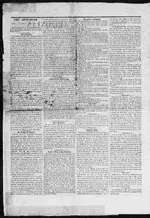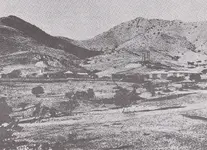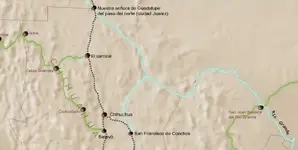deducer,
IMHO, your entire post is "subjective". It is based on your opinion, no matter what methodology you have used to reach those opinions.
Father Polzer is an accepted authority on Jesuit history. Your own expertise is based on your apparent conviction that you can "think like a Jesuit", because you have walked some of the same trails that they did. I have no wish to get into a pissing match with you over who has delved deepest into Jesuit thinking and history.
Did you just put your feet in the dirt of Mexico, or did you really look into the Jesuit mindset? How familiar are you with the Spiritual Exercises of St. Ignatius?
Do you know who said, "The Society wants men who are as accomplished as possible in every discipline that helps it in its purpose. Can you become a good logician? Then become one! A good theologian? Then become one! The same for being a good humanist, and for all the other disciplines that can serve our Institute.....and do not be satisfied with doing it half-way!"
That is an important part of how a Jesuit thinks.
Father Polzer had a deep respect for history. Before you accuse such a man of wanting to "re-edit Jesuit history in the Southwest", you should establish your own qualifications. Right now, I am unimpressed.
Take care,
Joe Ribaudo
Nadal’s
exhortatio complutensis at Alcala in 1561, while it offers some clues in how the first generation Jesuits were trained, and subsequently how they thought, still is just a recruitment pitch to those demonstrating inherent traits in certain areas such as the ability to competently grasp theology or logic, and not “halfway” anything, and not any sort of insight in how those talents were then developed over the next 20 years to further Ignatius’s visions. A better understanding of what was really taught would be an examination of what came to eventually form the
Ratio atque Institutio Studiorum Societatis Iesu, or the
Ratio Studiorum with an emphasis on the logic theology of St. Thomas of Aquinas, that became the standardized Jesuit education, beginning in 1599, a curriculum which included such arcane subjects as symbolic logic, the very presence of which attests to the Jesuit penchant for secrecy, a thing that would not have been necessary if there were no surreptitious agenda.
It would also be better go back another 21 years and perhaps further back, to understand how and why the Jesuits came to be, and the extraordinary circumstances that gave rise to the genesis that was the
Regimini militantis Ecclesiae, a militant reaction to the growing schism within Western Christianity from the Protestant Reformers such as Luther, Calvin, et al., which questioned papal infallibility and catechal absolutism amongst other things. It is fairly common knowledge that the jesuits
spearheaded and were the most effective organization behind the counterreformation movement and it is by no accident that the first generation Jesuits simply were known as the “reformed priests.” The Jesuit approach to counterreformation as compared to the other orders founded at the same time were well organized and naturally involved maneuvers of the
militantis variety, employing the dual doctrine of futurism and preterism to counter the humanistic logic of Protestant doctrine.
Such warlike enterprise in battling the rise of Protestant Reformation require prodigal sums of money to fund, as all wars do. Don’t think you could find a bigger motive for mining and hoarding of “Jesuit treasure” in
Nueva España than that.
The Spiritual Exercises of St. Ignatius, IMO, is a very good insight into what the model Jesuit was intended to be, in it’s core doctrine of devotionalism- with its four major themes, three of which had to do with the life, passion, and resurrection of Jesus, but altogether and with the help of a spiritual director, within the novitiate training program, were intended to instill the doctrine of
Ad maiorem Dei gloriam, that one suffer as Christ once did, the reenactment and the act of which ensured that any act done for the “greater glory of God” would be an act done to perfection, and one that didn’t cut corners, or left anything “half-way” done.
It is not hard to then envision Polzer applying his version of
militantis in revising Jesuit in the Southwest history not only to facilitate Kino’s conversion into sainthood, but also to redact any and all references to mining mineral wealth, the refining and storage of, or any mention thereof, not because such things were taboo, but that he and the organization knew that it would be hard for the secular to comprehend that such things really were done for
Ad maiorem Dei gloriam, not for sake of hoarding or accumulating wealth.
IMO far better to put my feet in Arizona, the furthermost reach of the
Nueva España Jesuits, for it is in such inhospitable territory (at the time) that we learn the most about who and what they really were, than in or near the center of civilization that Mexico was at the time.












